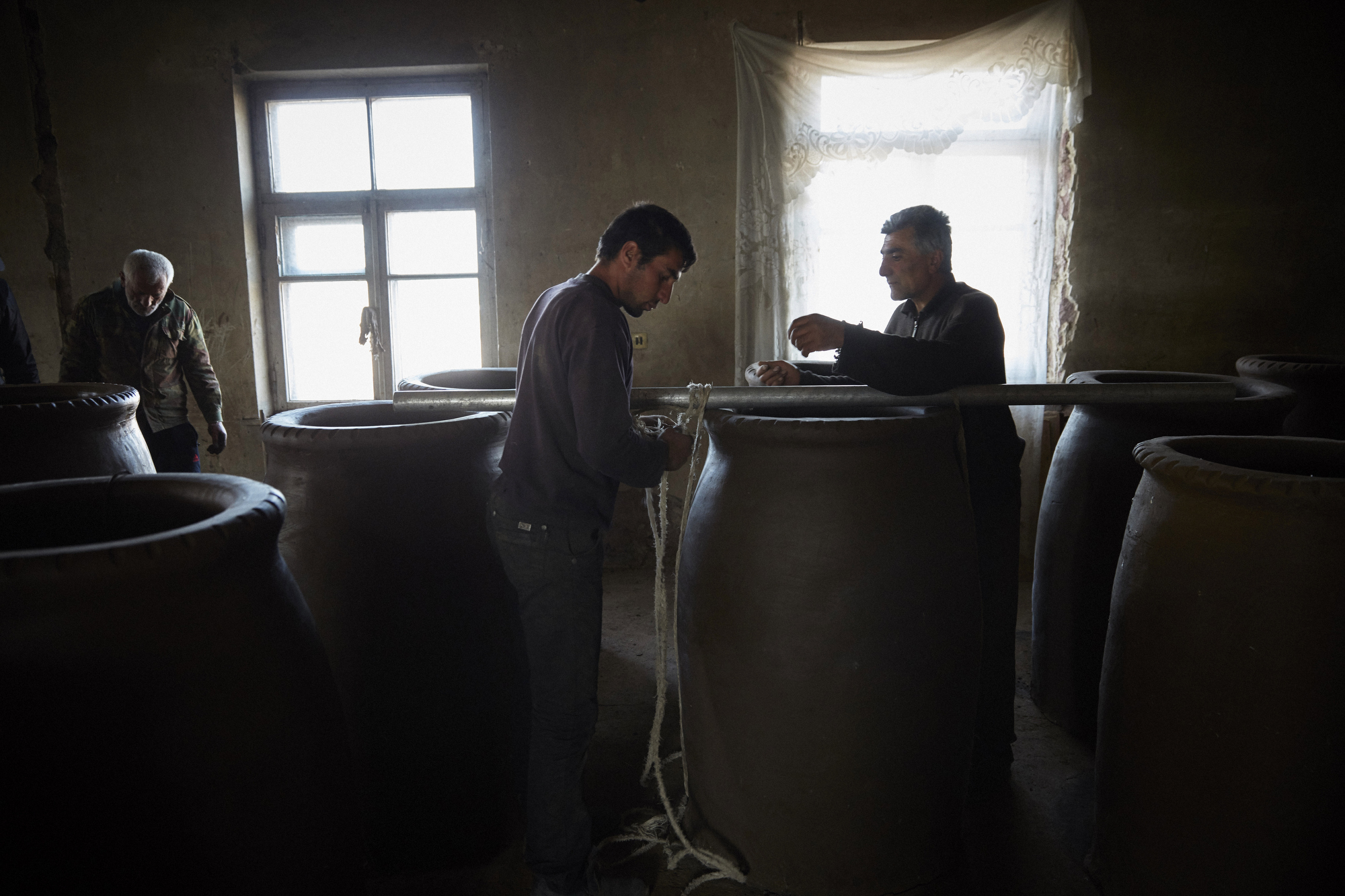How to Build a Clay Tonir
Words: Kate Leahy / Photos: John Lee / Video: Ara Zada
On the way from Gyumri to Yerevan, we made a stop in Sarnaghpyur to pay Spartak Aslanyan a visit. Aslanyan, and his cousin, Mrktich Aslanyan, make clay tonirs using a process that probably hasn't changed much in centuries.
We can certainly confirm that Armenians have been using tonirs for centuries. On our drive through Areni, an ancient winemaking region, we stopped to take a look at an archeological site that uncovered remnants of fermented grape juice dating back more than 6,000 years. And sure enough, next to the clay karas (the Armenian term for amphoras) used for storing wine, we also saw tonirs. The link between bread and wine, it turns out, goes back to early civilizations.
To make a clay tonir, the process goes like this: get clay mud from a nearby hillside and then knead it between two sheets of plastic by walking over it with your feet. Once the clay is ready, roll it into strips. These strips get stacked up to form a vessel that eventually becomes tall and wide enough to hide a man inside, as long as he bends his legs.
There are a few key stages in between, the cousins demonstrated. You can't stack all the clay coils in one day because the clay is too heavy and the whole thing will break. Instead, the Aslanyan cousins coil a few layers at a time over the course of 10 days, giving the tonir time to dry in between layers. Once the tonir is more or less complete, the cousins smooth the sides with a damp sponge. Then the tonir is set aside to dry for 20 days or so.
Finally, it's ready to be installed and seasoned. There's no single way to do it, but Spartak says he puts it in masonry (think of a large brick box), then fills the gaps between the tonir and brick with sand. But before baking lavash or cooking khorovats—or anything else—you season it. Make a small fire and slowly build it up for a few hours. Once the fire dies down, rub the walls with fat. Let the whole thing cool completely and what you're left with should be as strong as stone.
The whole process—getting and making local clay, molding it with bare hands, drying it, seasoning it with a fire—embodies the idea of cheghatsis, making something from nothing. And while building one of these in your own backyard might be more of a project than most would be willing to take on, understanding the process gives us even more of a reason to respect and marvel at the simplicity of tonir-baked lavash.









